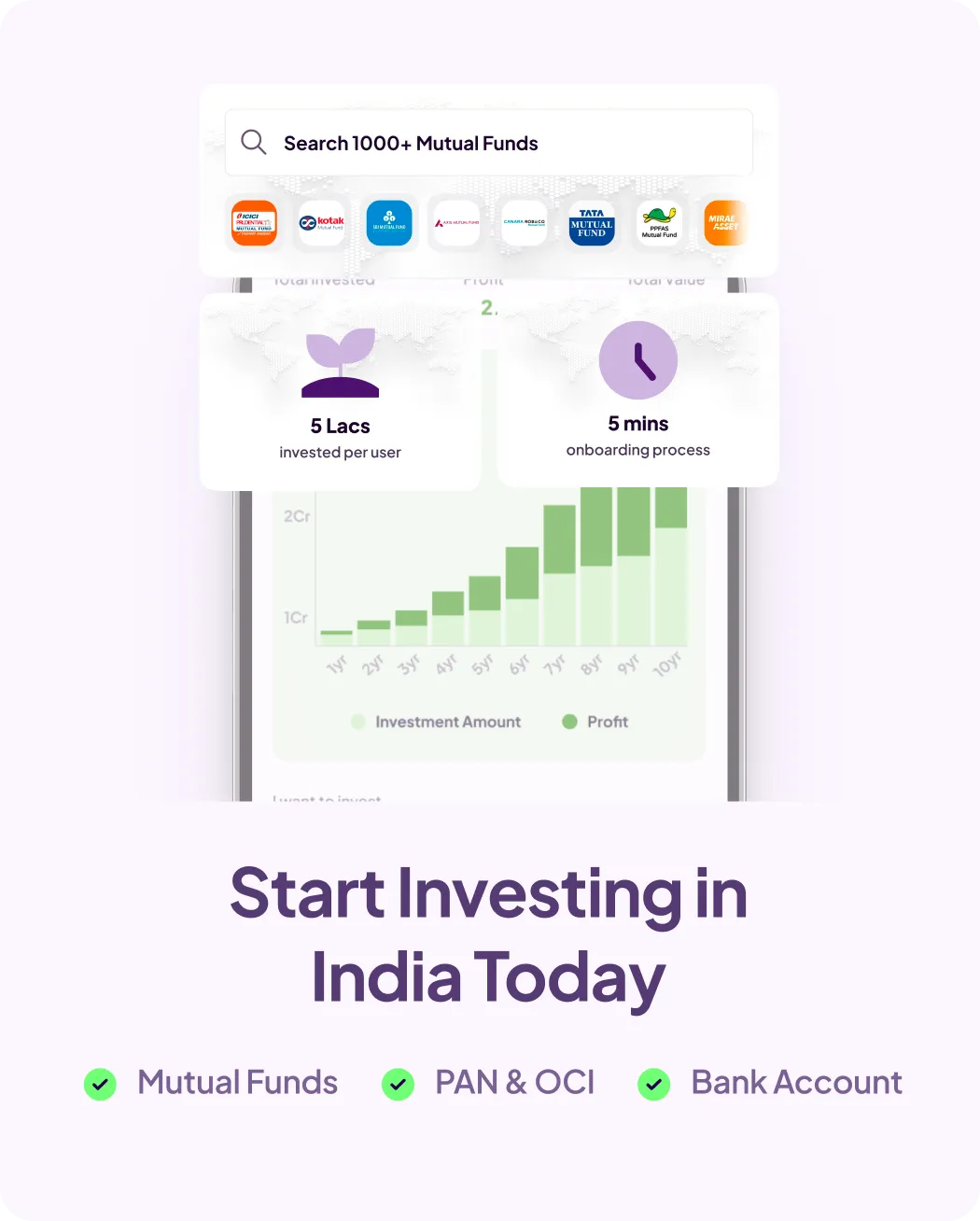The Securities Exchange Board of India (SEBI) mandates ‘large & mid-cap fund’ to primarily invest a considerable portion of its investment in both large and mid-cap stocks.
The mid-cap stocks are highly volatile and thus carry high risk.
On the other hand, the fund also invests in large-cap stocks that promise required stability to the fund’s portfolio.
So, is it worth investing in large and mid-cap funds? If yes, which funds to invest in?
Here’s a list of the best performing large and mid-cap mutual funds for NRIs in 2025.
What Are Large And Mid Cap Funds?
The large and mid-cap funds mandatorily allocate 35% of their investments to large-cap stocks and another 35% of its assets to mid-cap stocks. Overall they invest across top 250 companies by market-cap.
These funds offer you long-term capital growth potential along with the stability to your investments.
The large-cap companies are the top-100 ranked equities and the mid-cap companies are the top 101-250 ranked companies.
Best Large And Mid Cap Mutual Funds For NRIs And OCIs In 2025
How Do Large And Mid Cap Funds Work?
These funds create a diversified portfolio by predominantly allocating investments to large and mid-cap companies.
The fund manager performs extensive research before investing in selected mid-cap companies that offer growth potential with promising business outlook.
Next, the fund manager looks for large-cap stocks that can bring in required balance to the portfolio.
Here, you need to note that Large-cap stocks can also guard against major swings in the Indian market.
For the fund to earn good returns, the underlying stocks in the portfolio should perform well.
You need to be aware of certain costs involved in investing and redeeming of these funds like expense ratio (management fee) and exit load (levied while redeeming funds).
Who Should Invest In Large And Mid Cap Mutual Funds?
If you wish to get exposure to large and mid-cap stocks simultaneously, then this category is for you. Here are some reasons why large and mid-cap funds can be a good choice for your investment portfolio.
Diversified Portfolio
The large and mid-cap funds can be a really good option for you as it allocates at least 35% of its funds across each large cap and mid cap stocks. Thus, you are able to invest in a diversified portfolio.
The fund house has an option to allocate remaining funds to stocks or bonds of its choice.
Brings Stability and Growth
A large and mid-cap fund’s portfolio projects the stability of large-cap companies and the growth potential of mid-cap companies.
If you are looking for - funds with exposure to large and mid-cap stocks then this category can be a suitable option.
Start right away by creating an iNRI account, explore the mutual funds, conduct thorough research, seek professional help & start investing.
High Risk Tolerance
Equities are highly volatile and you need to know your risk appetite before investing in these funds.
The large-cap stocks bring stability to fund's portfolio, but are prone to market risks & can perform strangely during market distress.
Tax Implications For NRIs Investing In Large And Mid Cap Funds
Large and mid cap funds are a type of equity mutual funds, and thus attract taxes based on the investment holding period. And the Tax Deducted at Source (TDS) shall remain deductible. The taxation depends on
- Type of fund
- Period of holding
- Residential status
A Long Term Capital Gains Tax (LTCG) of 10% is levied on your investments held in a large-cap fund
- If your holding period is more than 12 months
- If your capital gains earnings exceeds INR 1,00,000
Note: As per the Budget 2024, from the financial year 2024-25, the LTCG tax deducted at source will be 12.5% provided the capital gains exceed INR 1,25,000.
A Short Term Capital Gains Tax (STCG) of 15% is levied on your investments held in a large-cap fund if the period of holding is 12 months or less.
Note: As per the Budget 2024, from the F.Y 2024-25, the STCG tax deducted at source will be 20%
A Securities Transaction Tax (STT) of 20% (deducted at source) is applicable on receipt of any dividend.
Also, thanks toDouble Taxation Avoidance Agreement (DTAA) between India and 100+ countries. You won’t be taxed again in the country of your residence on the receipt of capital gains in India.
Conclusion
NRIs looking to invest in pure large-cap or pure mid-cap funds can consider large and mid-cap funds as an alternative option.
The fund boasts the stability of a large-cap fund and growth potential of a mid-cap fund.
Knowing your risk appetite, financial goals and preferences are vital before investing in these funds as they carry high risk levels.
If you plan to diversify your investment portfolio, you can find assistance from iNRI’s AI-powered ‘Smart Investing Tool.’
Large And Mid Cap Mutual Funds: Frequently Asked Questions (FAQs)
What is a large and mid-cap mutual fund?
A large and mid-cap mutual fund predominantly invests in large-cap and mid-cap companies. These funds are suitable if you are looking for long term capital growth
What is the expense ratio of Quant large and mid-cap fund?
The expense ratio of Quant large and mid-cap regular growth fund is 1.91%.
Where do large and mid-cap mutual funds invest?
As per the SEBI, a large and mid-cap fund has to mandatorily allocate 35% of its investment in large-cap stocks and another 35% of its investment in mid-cap stocks.
Hence, the large and mid-cap fund invests in top 250 companies and allocates a minimum of 70% (35% across each) of its funds in these companies.
The fund manager can allocate the remaining sum of money to small cap funds, debt funds or entirely to the large and mid-cap companies depending on their investment strategy.
Are large and mid-cap mutual funds high risk?
Yes, large and mid-cap mutual funds are of high risk and suitable to you only if you are comfortable with the associated risks.
Large and mid-cap funds are volatile in the short term. Hence, investing for longer tenure growth might be essential.
At times, seeking the help of a financial advisor is essential to invest in a right fund and secure your capital.
How long should I stay invested in a large and mid-cap mutual fund?
The ideal investment horizon for a large & mid-cap mutual fund more than five years, as the fund is volatile in short-term.





